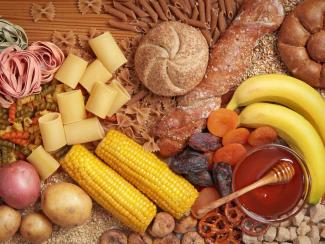Understanding the Glycemic Index

As many of our clients are affected by diabetes, I’ve decided to continue on the diabetes topic today. The glycemic index, or GI, measures how a carbohydrate-containing food raises blood glucose. Glucose or white bread is used as a reference, and foods are ranked based on how they compare to the reference.
A food with a high GI raises blood glucose more than a food with a medium or low GI.
Meal planning with the GI involves choosing foods that have a low or medium GI. If eating a food with a high GI, you can combine it with low GI foods to help balance the meal.
Examples of carbohydrate-containing foods with a low GI include dried beans and legumes (like kidney beans and lentils), all non-starchy vegetables, some starchy vegetables like sweet potatoes, most fruit, and many whole grain breads and cereals (like barley, whole wheat bread, rye bread, and all-bran cereal).
Protein (meat, fish, chicken, eggs etc) and fats do not have a GI because they do not contain carbohydrate.
Examples of foods based on their GI.
Low GI Foods (55 or less)
- 100% stone-ground whole wheat or pumpernickel bread
- Oatmeal (rolled or steel-cut), oat bran, muesli
- Pasta, converted rice, barley, bulgar
- Sweet potato, corn, yam, lima/butter beans, peas, legumes and lentils
- Most fruits, non-starchy vegetables and carrots
Medium GI (56-69)
- Whole wheat, rye and pita bread
- Quick oats
- Brown, wild or basmati rice, couscous
High GI (70 or more)
- White bread or bagel
- Corn flakes, puffed rice, bran flakes, instant oatmeal
- White rice, rice pasta, macaroni and cheese from mix
- Potato, pumpkin
- Pretzels, rice cakes, popcorn, saltine crackers
- Melons and pineapple
What Affects the GI of a Food?
Fat and fiber tend to lower the GI of a food. As a general rule, the more cooked or processed a food, the higher the GI; however, this is not always true.
Below are a few specific examples of factors that can affect the GI of a food:
- Ripeness and storage time — the more ripe a fruit or vegetable is, the higher the GI.
- Processing — juice has a higher GI than whole fruit; mashed potato has a higher GI than a whole baked potato, stone ground whole wheat bread has a lower GI than whole wheat bread.
- Cooking time — how long a food is cooked (al dente pasta has a lower GI than soft-cooked pasta).
- Variety — converted long-grain white rice has a lower GI than brown rice but short-grain white rice has a higher GI than brown rice.
Remember
Many nutritious foods have a higher GI than foods with little nutritional value. For example, oatmeal has a higher GI than chocolate. Use of the GI needs to be balanced with basic nutrition principles of variety for healthful foods and moderation of foods with few nutrients.
